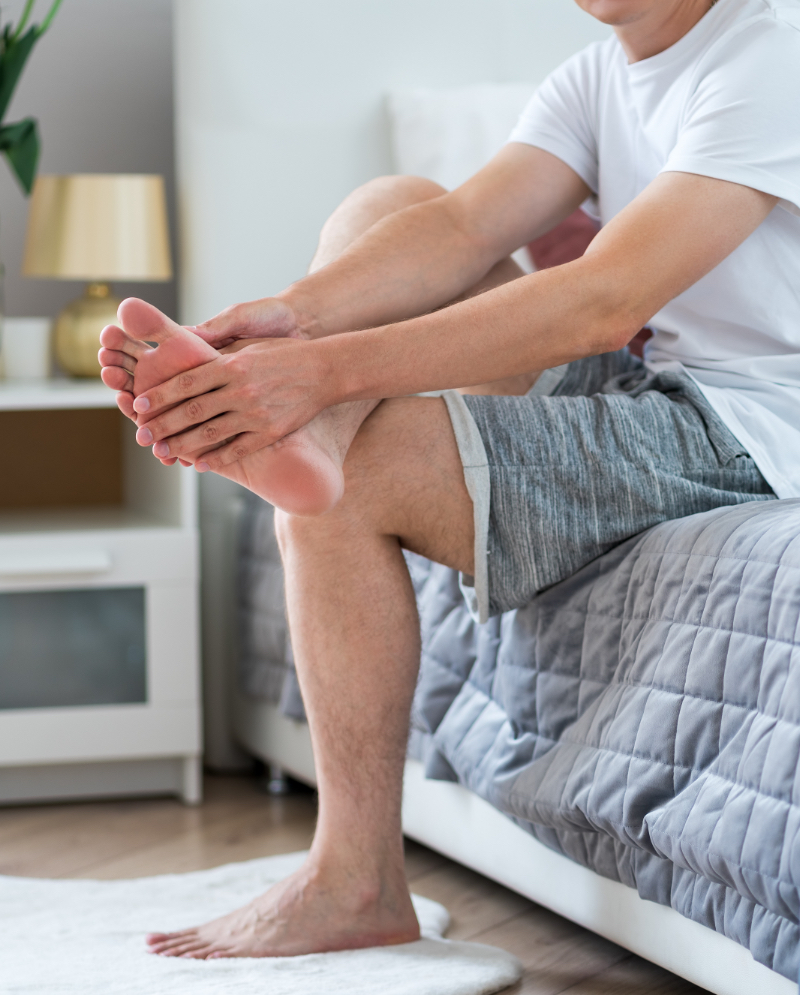Our feet are what keep us grounded. They help us walk, run, jump, and get through our day-to-day lives. When we start to notice changes in our bodies, it’s important to seek out information to make sure everything is working properly. If you start to notice irritation on your feet, it is possible that you may be experiencing corns or calluses. Corns and calluses are hard, painful areas of skin that often develop on the feet in response to pressure or friction. They happen when the skin tries to protect an underlying area from injury, pressure or rubbing. Neither of them is dangerous, but they can cause irritation and should be removed if they cause significant discomfort.
What Are Corns?
Corns are a kind of callus, made of dead skin. They normally form on the top or the side of the toes on smooth, hairless skin surfaces, especially. Corns tend to develop on non-weight-bearing areas, such as across the tops of your toes. They form as your toes get pushed up against the insides of your shoes and your skin becomes thicker and thicker. Corns can become painful and irritated. They more commonly occur between the toes, in areas of moist and sweaty skin. Calluses and corns are not normally harmful, but sometimes they may lead to infections or ulcerations of the skin, especially among people with diabetes and those with poor circulation in the feet.
What Are Calluses?
Calluses are larger, often thicker patches of dry, flaky skin. They usually develop on weight-bearing areas of your feet, such as your heels, and are rarely painful. Calluses are yellowish or pale in color. They feel lumpy to the touch, but, as the skin is thick, it may be less sensitive to touch compared with the skin around it. Calluses are often bigger and wider than corns, with less defined edges. They commonly appear where the skin frequently rubs against something like footwear or the ground. They typically form over the bony area just under the toes and areas of skin that bear a person’s weight when they are walking.

Signs To Look For
Whether your corns and calluses are causing discomfort, or they’re simply unsightly, Beyond Podiatry is here to help. Corns and calluses can make a person feel as if they are walking on stones. If a corn or callus becomes very inflamed or painful, you should seek medical advice. Patients with poor circulation, fragile skin, or nerve problems and numbness in the feet should talk to their doctors before treating corns and calluses at home. The following signs or symptoms may indicate that you have a corn or callus:
- A raised, hardened bump
- A thick and rough area of skin
- Skin that is flaky and dry or flaky and waxy
- Pain or tenderness under the skin
How Are Corns and Calluses Treated?
In most cases, treating corns and calluses involves using a clinical-strength salicylic acid medication to soften your skin. Your practitioner may also pare down or trim away damaged skin with a sterile scalpel. Once your current corns and calluses are treated, your podiatrist can show you how to care for your feet at home and help you select a proper foot softening cream for daily use.
Corns & Calluses Treatment in Michigan, Illinois, & Kentucky
Added pressure from snug-fitting shoes and certain foot deformities can increase your chances of developing corns and calluses. If you are experiencing discomfort due to these growths, Beyond Podiatry is here to ease your pain. Find your nearest location and schedule an appointment over the phone or online today. We look forward to meeting you!
